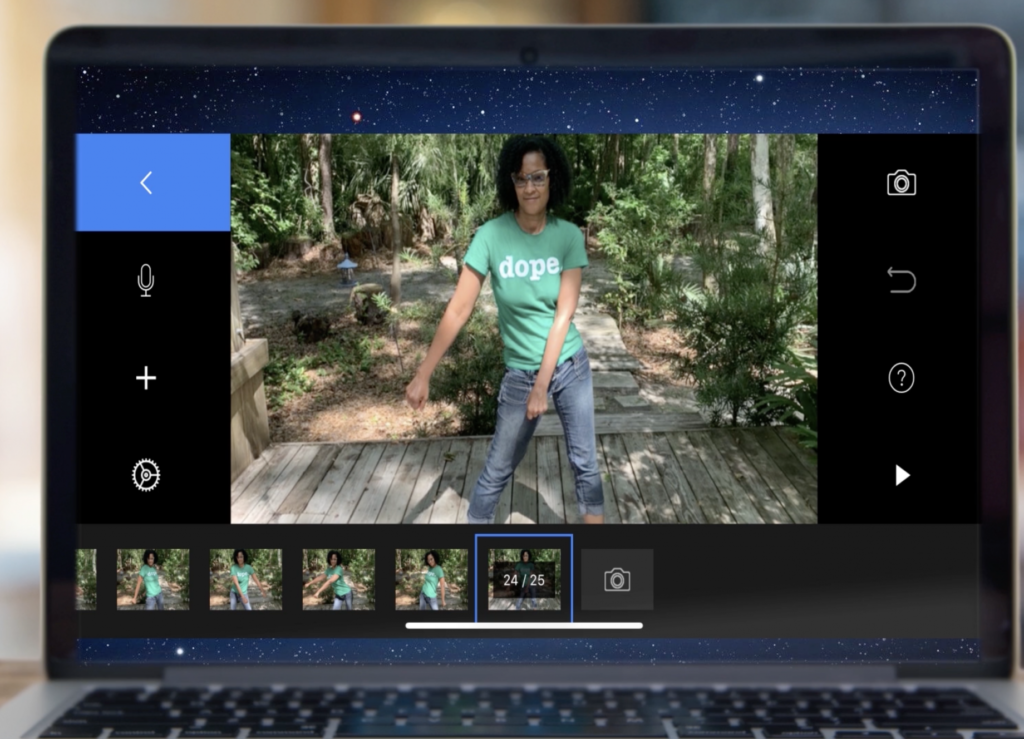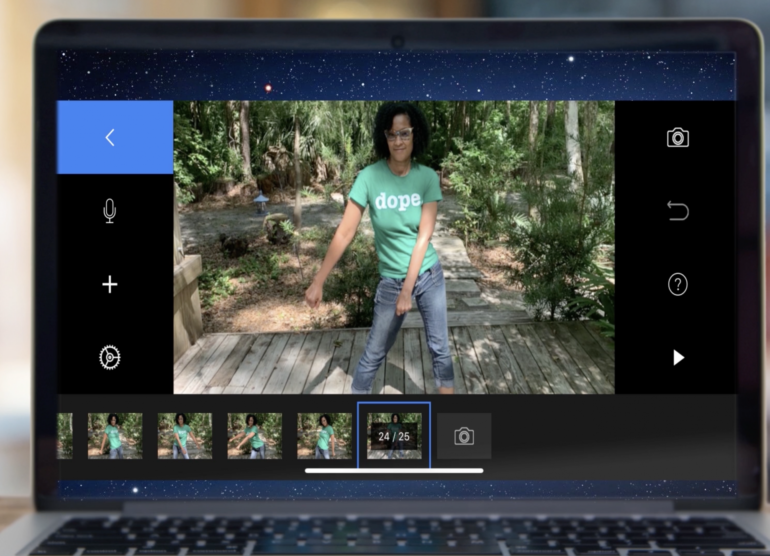During this transitional period of distance learning, many kids have been robbed of their creative outlets often found in school spaces.
The University of Florida Center for Arts, Migration, and Entrepreneurship (CAME) teamed up with the UF Center for Arts in Medicine and the Digital Worlds Institute to create a virtual arts-infusion program for Howard Bishop Middle School.
The Virtual Creative Arts Academy offers activities that challenge students to create content using dance, spoken word, photography, video editing, animation, and computer programming to explore the concept of “going viral.” The students are also given the opportunity to engage with their peers through facilitated, online chat rooms.

Dr. Dionne Champion, a research assistant professor in the Center for Arts in Medicine and CAME affiliate faculty member, is a major contributor to the VCAA, alongside other College of the Arts faculty.
“Digital technologies have enhanced what people are able to do with dance and their bodies and the way that they present visual images,” Champion said.
By offering this kind of engagement, the VCAA opens the opportunity for students to explore new artistic and scientific avenues.
Latoya Jennings-Lopez, the coordinator of the Community Partnership Schools initiative at Howard Bishop, reached out to Andrew Telles, UF’s Director of Collaborative Initiatives, after seeing a need to provide creative activity to their students learning at home during the COVID-19 pandemic.
The program not only encourages innovative and creative flexibility but can also be accessed through multiple platforms.
“The applications that we were using, the videos that we were creating, the things that we were asking them to do would be accessible through iOS, through Android, through PC, through Mac, all versions of any access to technology, recognizing that some kids were accessing the internet through their cell phones to log into school every day,” Champion said.
Accessibility is an essential aspect that can define major projects like the VCAA, and the program coordinators heavily emphasize designing activities that include all participants in the conversation.
As students progress through their individual projects, they move on through a leveling process, as one would in a video game. With each progression, the students hone their skills by utilizing the elements of the previous level by adding them on to the components of the following level. They also have the chance to redo each level to improve upon their work after receiving feedback from faculty and peers.
For example, level one of an animation challenge might ask students to upload pictures or video of themselves in a space. Level two might ask students to remove the background of the image and drop it into an online animation program. Level three might take students through the process of programming their images to move around on the screen to make it look like they are dancing.
Virtual Creative Arts Academy students learn about “going viral” connecting ideas from internet popularity to biology and health.
Going one step further, the project aims to open dialogue on subjects of race and social justice. Students are not only asked to produce creative works, but they are also given a platform to learn and talk about what is going on in the world around them.
“I have created a dance production that is actually a tool for teaching about racism,” Champion said. “So the production was co-created with youth in order to explore their relationships to the issues that they’re dealing with in their present-day lives and how that relates historically to the issues that African American people have dealt with.”
The program concludes with a “Final Showing” via a virtual live stream where all the students can share their projects and talk about their creative processes.
The VCAA successfully launched as a pilot with Howard Bishop Middle School’s summer enhancement program, and since then received funding to help implement a one year, in-school version of the program. There are 17 total schools in Florida’s community partnership network who are becoming aware of the project, like Edward White High School in Jacksonville, which already reached out to collaborate.
The VCAA faculty team is currently building more modules on animation, music production, and racial justice while seeking funding to expand the project.
UF faculty VCAA team members include:
Alana Jackson, Service Learning Lecturer, Center for Arts in Medicine & Affiliate Faculty, Center for Arts, Migration, and Entrepreneurship
Chelsea Cantrell, Lecturer in Digital Arts & Sciences, Digital Worlds Institute
Dionne Champion, Research Assistant Professor, Center for Arts in Medicine & Affiliate Faculty, Center for Arts, Migration, and Entrepreneurship
Rachel Carrico, Assistant Professor of Dance, School of Theatre and Dance & Affiliate Faculty, Center for Arts, Migration, and Entrepreneurship
Explore the Virtual Creative Arts Academy here.
Learn more about the Center for Arts, Migration, and Entrepreneurship on its website.
This story originally appeared on UF College of the Arts.
Check out more stories about UF research on COVID-19.

